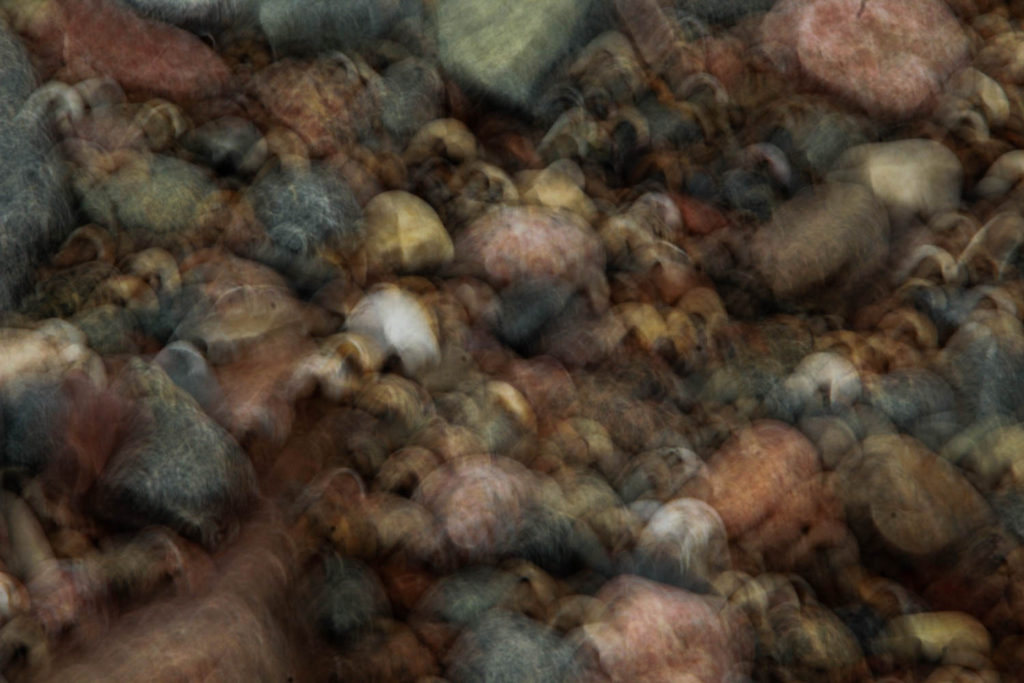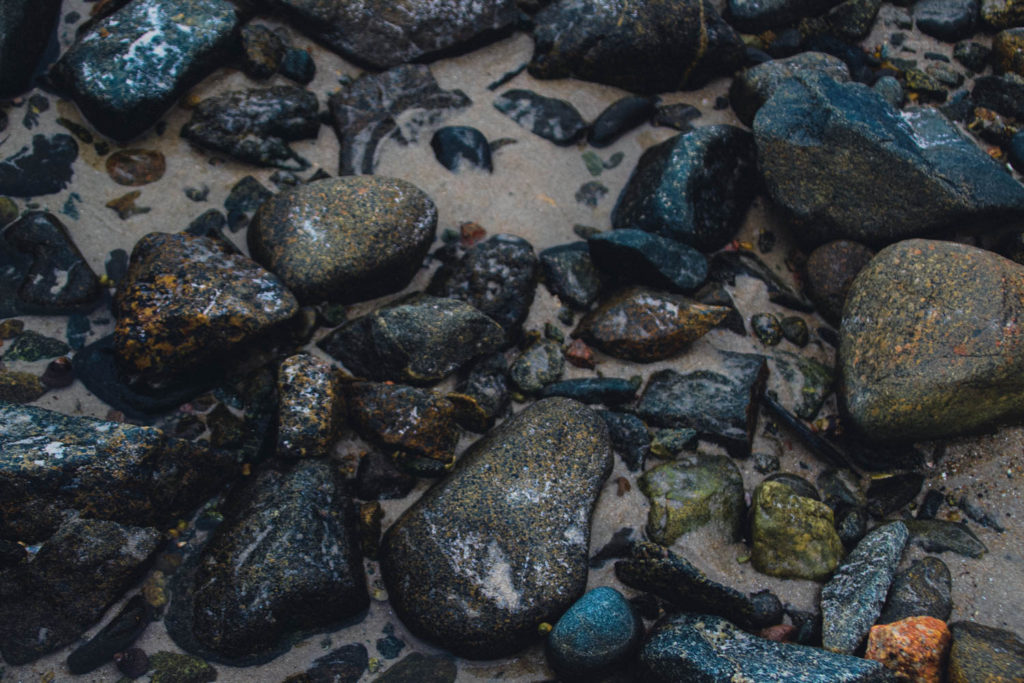| PLACES: | Pitt Street, Dumaresq Street | ||||||||||||||||||

Pitt Street, Dumaresq Street – google earth


SJPA/032609
First Tower, St Aubin’s Road, First Tower Laundry

SJPA/000053 Parade Place
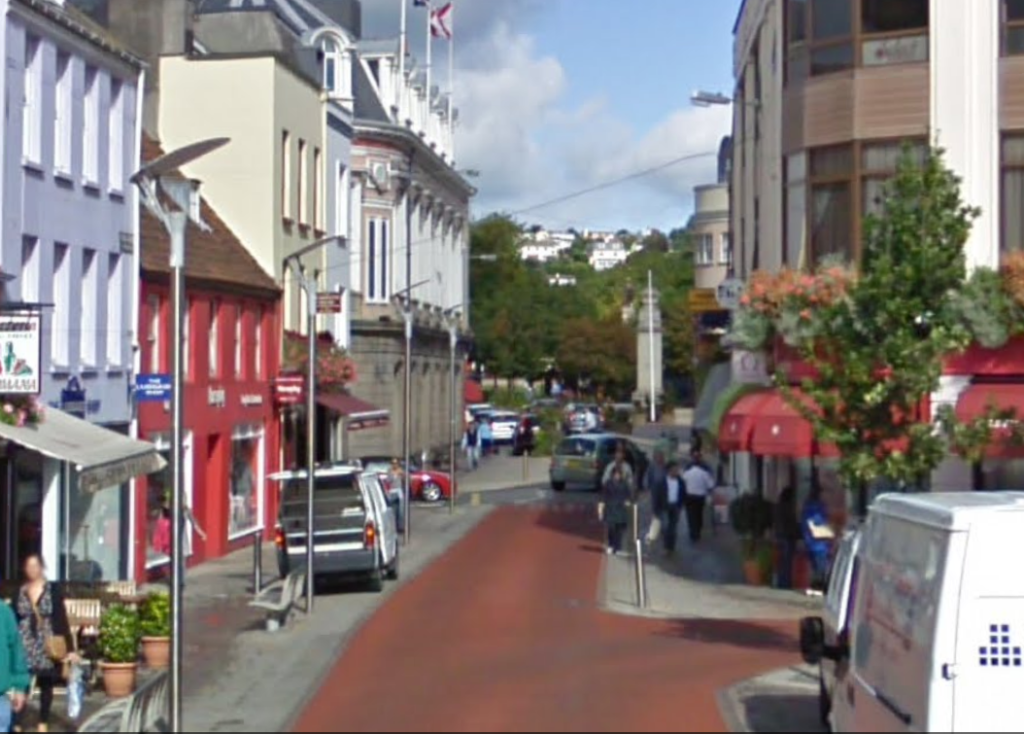


| SJPA/001545 |
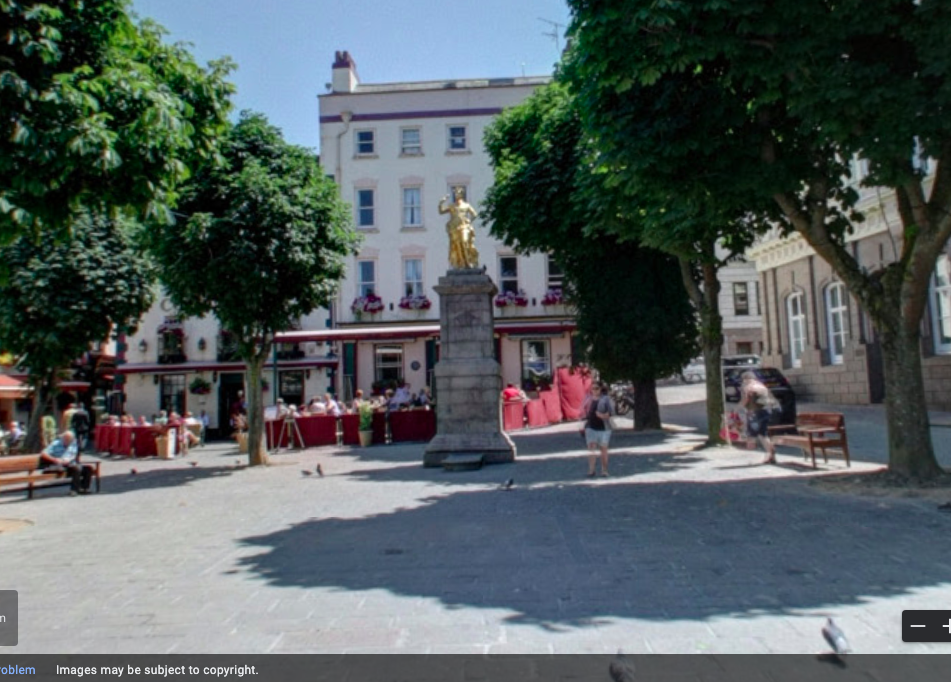


urrard Street, Don Street google earth



| PLACES: | Pitt Street, Dumaresq Street | ||||||||||||||||||







| SJPA/001545 |



urrard Street, Don Street google earth



Why are photographic archives so important ?
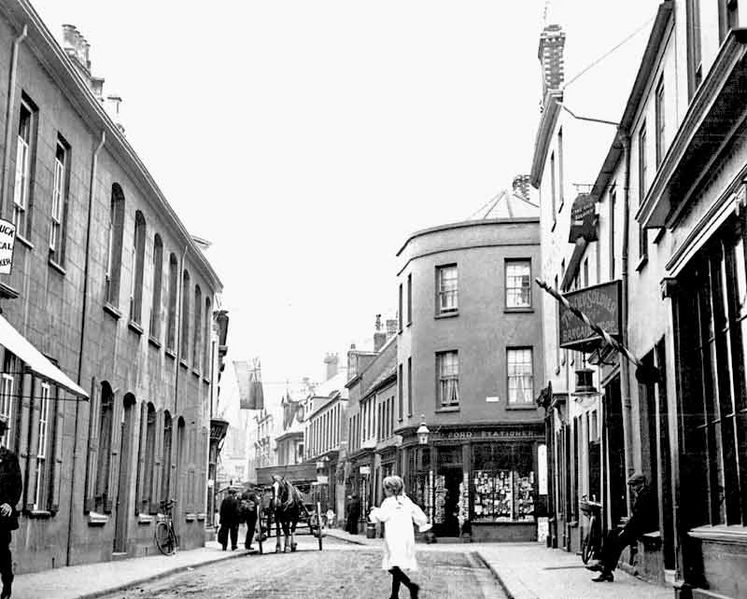


Archives are collections of documents, photographs, and other items that are kept for historical purposes. They’re usually held by governments or other organisations like museums or libraries. They have been around since the invention of writing. The first archives were created as a way to preserve important records and documents from being lost or destroyed over time, but they didn’t start out looking like we think of them now. In fact, before photography was invented, people would often draw pictures or write descriptions of the things they wanted to save for future generations. The first archive photographs were taken in 1839 by Louis Daguerre, who invented the daguerreotype process. In this essay I will be looking at photography that is based on exploring Jersey Islandness. I’ve decided to make my final project of Then and Now photography, It will present a series of photography that document the changes in architecture over time in Jersey. The photographs will be categorised as either “Before” and “after” with the location and date both photos were taken. The images were taken at different times so that they could capture how different structures have been affected by weather, humans, and other factors over time. My goal is to show how much architecture has changed over time, how much it hasn’t changed, and how the buildings have evolved with time and to also help us understand our own history by comparing images from different eras and contexts. I believe that archive photography is an important tool for documenting changes that take place over time. This type of photography allows us to see what has been lost or forgotten over time. For example, if we had never known what it looked like before or after World War II, we would not know what different cities used to look like. Using Société Jersiaise archive I have chosen a couple of photographs around St. Helier where I will re photograph in the same exact spot. The photographers I will be looking at are Jersey photographers that documented jerseys landscapes. My two key photographers are Percival Dunham and Edwin Dale who are both from the same time period and took photographs to document Jersey. Percival Dunham was a photographer for the local newspaper called “The illustrated weekly” and “morning news“. He had been in business as a photographer at 57 bath street since 1911, and had already been taking photographs for the battle of flowers and other events such as the grounding of the roebuck in St. Brelade’s bay in 1911. Little is known about him other then being described in the Jersey roll of service as ‘from St. Helier’ however it seems unlikely that he was born in Jersey. In the photographic archive of the Société jersiaise there is a collection of just over one thousand glass plate negatives taken by Percival taken between 1913-1914. At least 800 of these negatives were published in ‘Jerseys morning news daily newspaper’ or its sister publication ‘The jersey illustrated weekly’ between April 1913 and October 1914. His photographs were taken with a cumbersome plate camera over a decade before the introduction of hand held cameras and flashbulbs were the golden age of photo journalism.


Its interesting to see how photography has changed over Time. In the early days of photography, it was mostly used for commercial purposes, for example, in advertisements, landscape and portraits. But as technology advanced and cameras became more affordable, people started using them in their daily lives. The other photographer I will be looking at is Edwin Dale. Born on 3 January 1882 and has left a fascinating selection of island views taken between 1910 and 1920. In 1913 He entered the Jersey Eistedfodd photographic competition for the first time and won four first prizes and two second prizes. He made his living running his father’s boot, shoe and leather shop at 63 New Street but he had a passion for photography, and among his favourite subjects were harbour scenes and steamships, churches, houses, country lanes and coastal views, sport and the railway. He also took portraits and photographs of islanders at work. As well as being a very talented photographer, Edwin Dale was a keen racer of model boats and known for his love of motorcycles. Many of his early images include the motorised bike on which he would travel around the island taking photographs. Most of his work dates from 1910 to the 1920s and one of his favourite subjects was the railway. He died on 27 January 1956. One of Edwin Dales photos below from 1912 taken with the view from South pier towards commercial Buildings with sailing boats in harbour at mid-tide, advertisement hoarding for Eldridge, Pope & Co, Dorchester ales on granite wall with fort regent in the background. In the foreground there are several different boats all different types of sizes all focused. The lighting is quite over exposed picking up the white colours of the sail boats. If you look closely you can see the reflection of the sailboat in the water which is in the centre of the image. However it being a bright photograph there are also some underexposed areas where you can see on two of the sailboats which adds some detail to the image. There are a range of tones throughout the image, the lightest tones can be see in the background and on the sailboats along with the darker tones that are seen more in the middle ground. The type of lighting in this is natural lighting as its outside, you can tell it was taken in the daylight because the image is clearly visible.

A modern day photographer that has inspired me and is also similar to my Islandness project is Michael Marten, an inspirational seascape and landscape photographer who is passionate about documenting nature. He has an interest with the tides changing throughout the seasons. Between the years of 2003 and to 2012 Michael travelled to different parts of the coasts to photograph an identical view from high tide to low tide of England starting from South-west then on to North west, North-east and ending with South-east. The photographers love for outdoors is evident in every shot as he captures light, texture and colour from outside. A connection Between Michaels and my project is the Before and After concept even though both our photos are different from each other. A quote from his book that relates to my photographs is “One aspect of what makes these photographs so compelling is the fascination of comparing each pair of pictures, spotting what has or hasn’t changed” Macfarlane, R. (2012) written by Robert MacFarlane who wrote the introduction to Michael martens book. Having looked at Micheal Martens work I can now approach my work in a creative approach shaped by his style.


Bibliography: https://www.michaelmarten.com/books

In conclusion Archive photography is a powerful tool for documenting how humans have changed the architecture of their environment. It can be used to document how we interact with our built environment, and it can also be used to show how we’ve altered our surroundings over time. This type of photography allows us to see how things looked in the past, which helps us understand what has changed and why. Archive photography is an important part of the history of photography. It allows us to see how far we have come and how much we have changed as a society. It allows us to see what was considered normal or acceptable at the time when these photos were taken. I think it’s important to have two key photographers, Percival Dunham and Edwin Dale, for inspiration. I’m going to use Société Jersiaise to find their photographs to re-photograph them in the same exact spot that Percival Dunham and Edwin dale took the photographs. After taking the photoshoots I will use Photoshop to experiment with each photograph, photo montages



I will investigate how archive photographs can document architecture through decades. Archive photographs are a great way to understand how a building has changed over time. The photos can show how the building looked when it was first built, and then how it looked when it was renovated or restored. They can also show how the building has aged naturally through the years. This can help us understand what materials were used in its construction and what types of repairs have been made over time. When looking into how archive photographs can document architecture through decades, I will investigate the following:
– The use of camera angles to show off the buildings features and to highlight its relationship with its surroundings.
-The use of light and shadow to emphasise the height of a building or its position in relation to other structure’s
This idea of work that interests me in Then and Now photography is seeing how much has changed within Jersey, such as architecture, old buildings, modern buildings, different influences to change
The history of art and photography:
history of photography, method of recording the image of an object through the action of light, or related radiation, on a light-sensitive material. The forerunner of the camera was the camera obscura, a dark chamber or room with a hole (later a lens) in one wall, through which images of objects outside the room were projected on the opposite wall. The principle was probably known to the Chinese and to ancient Greeks such as Aristotle more than 2,000 years ago.
BIBLOGRAPHY
Raymond, M (2018) Half-story half-life
Meeks, R. (2018), Halfstory Halflife. Marseille; Chose Commune
“If you could just say I feel lost here and I am going home. For where on earth would you buy that ticket. Who would meet you when you got there. By what sign would they know you”
ESSAY QUESTIONS:

Photographs can provide glimpses into lives past, long-ago events, and forgotten places. They can help shape our understanding of culture, history, and the identity of the people who appear in them.
Theme: Then / now photography
Artist reference:
How does Photography document changes through time / architecture.
The impact of humans being documented through photography
| SJPA/008367 |




PROCESS TECHNIQUE:
LOCATIONS:
St. Helier – Town, Marine harbour
Gorey – Castle
St. Aubins – harbor
PHOTOGRAPHERS:
EXPERIMENTS:


Art Movements & Isms
PICTORIALISM
time period : 1880s – 1920s
Key characteristics/ conventions : To make photography an accepted art form. Saw photography a quick and easy process. the point of photography was democratic. The technology at the time was the camera make called kodak. kodak invented a camera called a box camera that were cheap so anyone could buy it.
Daguerreotype was the first publicly available photographic process.
Photography was invented for a scientific purposes.
Artists associated: George Davison, Hugo Haneberg, Alfred stieglitz, Henry peach Robinson
Key works:
Methods/ techniques/ processes: There were many different scientific process, Smearing Vaseline on the camera lenses, used chemicals in the process of the printing. Scratching the negatives
Influences:
EXAMPLES:






REALISM / STRAIGHT PHOTOGRAPHY
Time period: 1920 –
Key characteristics/ conventions : To photograph things as they are without any manipulation. To produce sharply focussed images without manipulating it to change colour or shape.
Artists associated: Paul stand , Alfred Streepridges, walker Evans, Edward westerns
Key works: Family of Man by Bernice Abott, MOMA by John Szarkowski, The Steerage by Stieglitz, Hale Country by Walker Evans, Cubism, Fauvism.
Methods/ techniques/ processes: Explored the ideas of Cubism – Picasso. Soft/crisp focus, wide depth of field, digital photography.
Influences: pictorialism, cubism
EXAMPLES:






MODERNISM
Time period: 1900s – 50s
Key characteristics/ conventions : Photographers began to embrace its social, political and aesthetic potential, experimenting with light, perspective and developing, as well as new subjects and abstraction. Coupled with movements in painting, sculpture and architecture , these works became known as ‘modernist photography’.
Artists associated: Edward Weston, Ansel Adams, Imogen Cunningham, Minor White, Ernst Haas, Saul Leiter, Aaron Siskind, Henry Callahan, Frederick Sommer, Paul Strand.
Key works: Harry Callahan and Chicago (1948), Frederick Sommer and Three Grazes (1985), Paul Strand and Porch Shadows (1916).
Methods/ techniques/ processes: Makes references into photographic techniques inside the art itself such as the form, composition, medium, material, skills, techniques, processes, etc.
Influences:
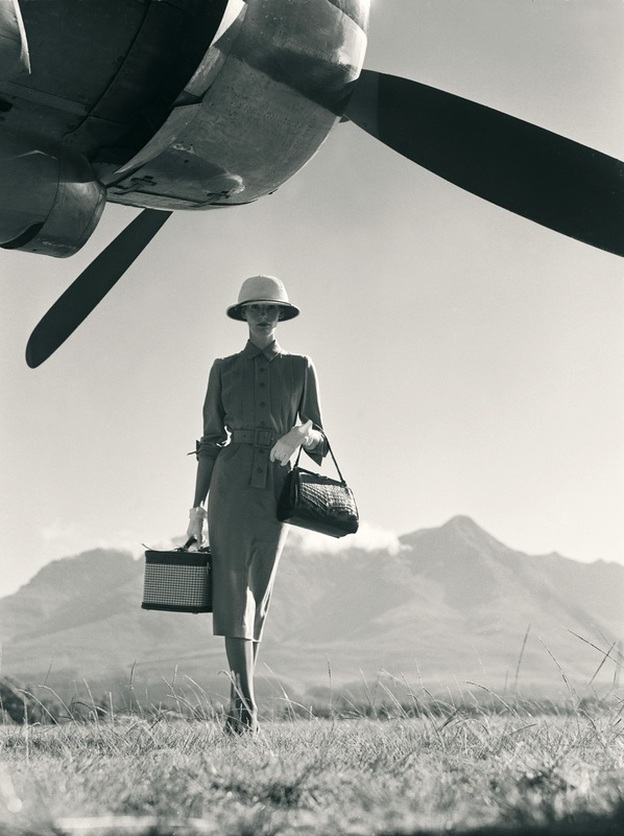







POST-MODERNISM
Time period: 1910s – 2000s
Key characteristics/ conventions : Used by Postmodernists/Architects who went against the international style of modernist architecture, relativism, used by postmodern artists to explore the way that society proposes the traditional hierarchy of cultural values/meanings, explores power and economic/social forces which shape identities of individuals/cultures, used by female photographers and artists in the 1980s, represents seriality and repetition
Artists associated: Cindy Sherman, Barbara Kruger, Sam Taylor-Wood, Corrine Day,
Key works: : Chapter 5 in ‘Intimate Life’ in which is Charlotte Cotton’s book The Photograph a Contemporary Art, Barbara Kruger and Untitled (Your Body is a Battleground (1982), Corrine Day and Diary (1997), Sam Taylor-Wood and Soliloquy I (1998).
Methods/ techniques/ processes: Postmodernists use text, speak in one voice, photographs/other works consists of having one meaning, the photograph is reproducible and adaptable, blown up, cropped, blurred, used in other medias,
Influences:
LEWIS BALTZ

Lewis Baltz was born in Newport Beach, California, he studied at the San Francisco Art Institute, and received an MFA from the Claremont Graduate School in 1971. He worked as a freelance photographer in California and taught photography at various institutions, including the California Institute of the Arts, the University of California (Riverside and Santa Cruz), Yale, the École Nationale Superieure des Beaux-Arts, Paris, and the Art Academy of Helsinki. His work has been included in major exhibitions, including New Topographics at the George Eastman House in 1975 and Mirrors and Windows at the Museum of Modern Art in 1978. Baltz, who received National Endowment for the Arts grants in 1973 and 1977 and a Guggenheim Fellowship in 1977, has produced many projects on commission, among them The Nation’s Capital in Photographs for the Corcoran Gallery of Art and Near Reno for the Nevada State Arts Commission. He has been based in Europe since the mid-1980s and travels extensively.
Lewis Baltz produces photographs in series focused on a particular theme.



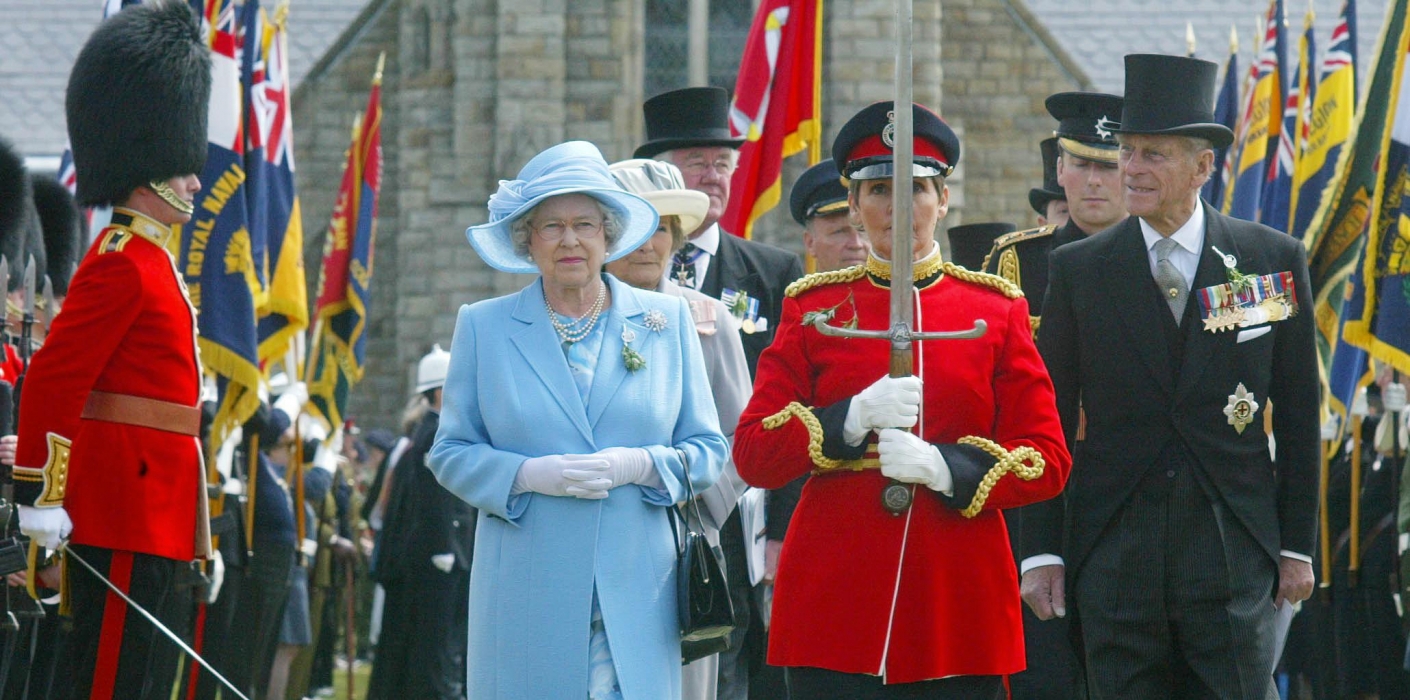
In 1204 King John lost the Battle of Rouen against the French King Philippe-Auguste. The defeat signalled the loss of continental Normandy, united with the English Crown since the invasion of England by William the Conqueror in 1066. The Channel Islands, part of the Duchy of Normandy for more than a hundred years at that point, might have been expected to align themselves with the French King in 1204 but they were persuaded by a combination of carrot and stick to side with King John instead.
Among the privileges which the King granted Islanders was the right to be governed by their own laws and he instructed them to select their 12 best men as Jurats who, sitting with the Bailiff, became the Island’s Royal Court. A warden, later to become governor, was appointed by the King to organise the defence of the Island.
The Crown Dependencies are three island territories in the British Islands that are self-governing possessions of the British Crown: the Bailiwick of Guernsey, the Bailiwick of Jersey, and the Isle of Man. They are not part of the United Kingdom (UK) nor are they British Overseas Territories. They have the status of “territories for which the United Kingdom is responsible”, rather than sovereign states. As a result, they are not member states of the Commonwealth of Nations. However, they do have relationships with the Commonwealth and other international organisations, and are members of the British–Irish Council. They have their own teams in the Commonwealth Games.
Each island’s political development has been largely independent from, though often parallel with, that of the UK, and they are akin to ‘miniature states with wide powers of self-government’.
As the Crown Dependencies are not sovereign states, the power to pass legislation affecting the islands ultimately rests with the King-in-Council (though this power is rarely exercised without the consent of the dependencies, and the right to do so is disputed). However, they each have their own legislative assembly, with the power to legislate on many local matters with the assent of the Crown (Privy Council, or in the case of the Isle of Man in certain circumstances the lieutenant-governor). In Jersey and the Isle of Man, the head of government is called the chief minister. In Guernsey, the head representative of the committee-based government is the President of the Policy and Resources Committee.
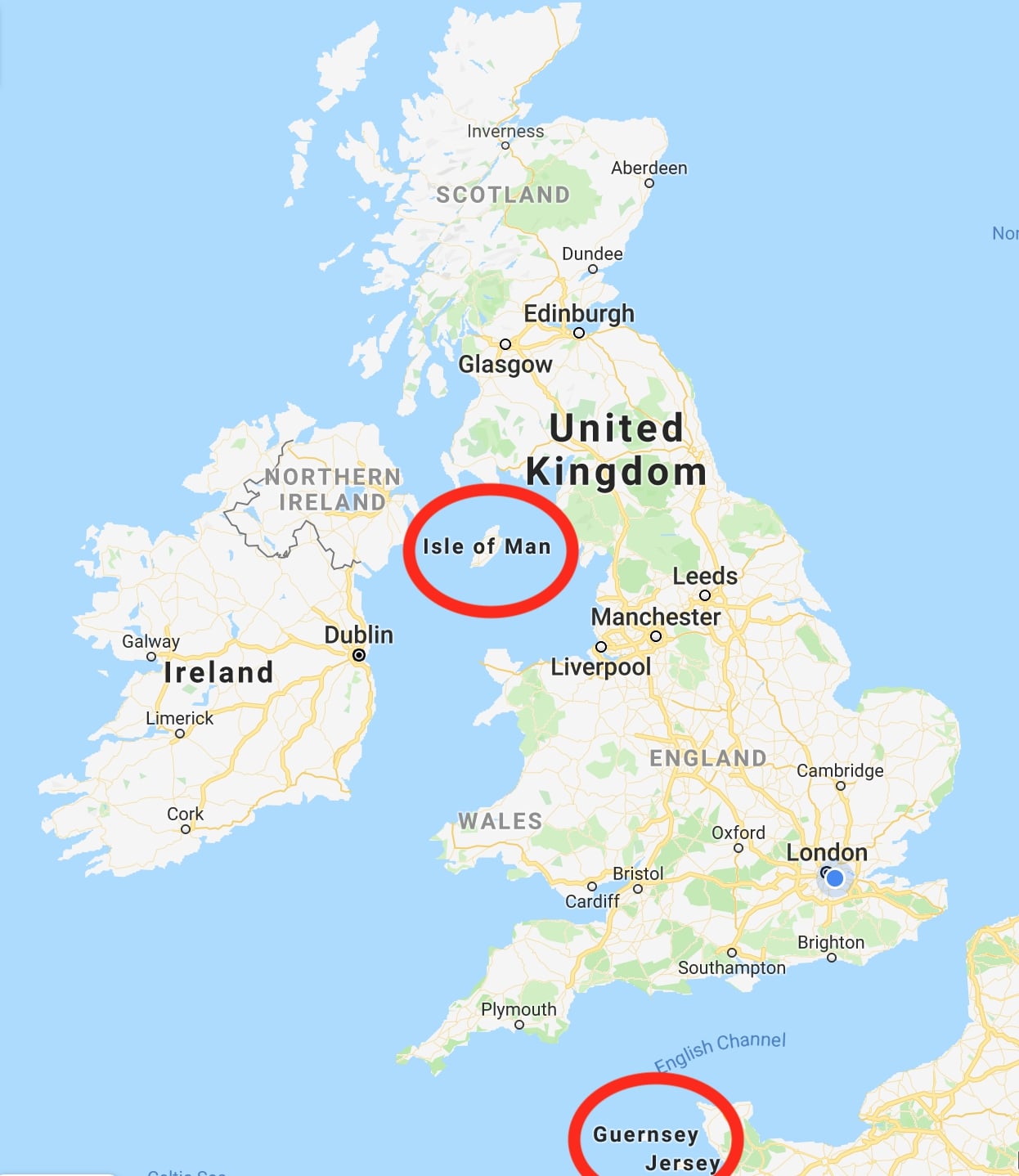
“The Crown” is defined differently in each Crown Dependency. In Jersey, statements in the 21st century of the constitutional position by the Law Officers of the Crown define it as the “Crown in right of Jersey”, with all Crown land in the Bailiwick of Jersey belonging to the Crown in right of Jersey and not to the Crown Estate of the United Kingdom. Legislation of the Isle of Man defines the “Crown in right of the Isle of Man” as being separate from the “Crown in right of the United Kingdom”. In Guernsey, legislation refers to the “Crown in right of the Bailiwick”, and the Law Officers of the Crown of Guernsey submitted that “The Crown in this context ordinarily means the Crown in right of the république of the Bailiwick of Guernsey” and that this comprises “the collective governmental and civic institutions, established by and under the authority of the Monarch, for the governance of these Islands, including the States of Guernsey and legislatures in the other Islands, the Royal Court and other courts, the Lieutenant Governor, Parish authorities, and the Crown acting in and through the Privy Council.” This constitutional concept is also worded as the “Crown in right of the Bailiwick of Guernsey”.

The Bailiwick of Jersey consists of the island of Jersey and a number of surrounding uninhabited islands.
The parliament is the States Assembly, the first known mention of which is in a document of 1497. The States of Jersey Law 2005 introduced the post of Chief Minister of Jersey, abolished the Bailiff’s power of dissent to a resolution of the States and the Lieutenant Governor’s power of veto over a resolution of the States, and established that any Order in Council or Act of the United Kingdom proposed to apply to Jersey must be referred to the States so that the States can express their views on it. There are a few political parties, as candidates generally stand for election as independents.
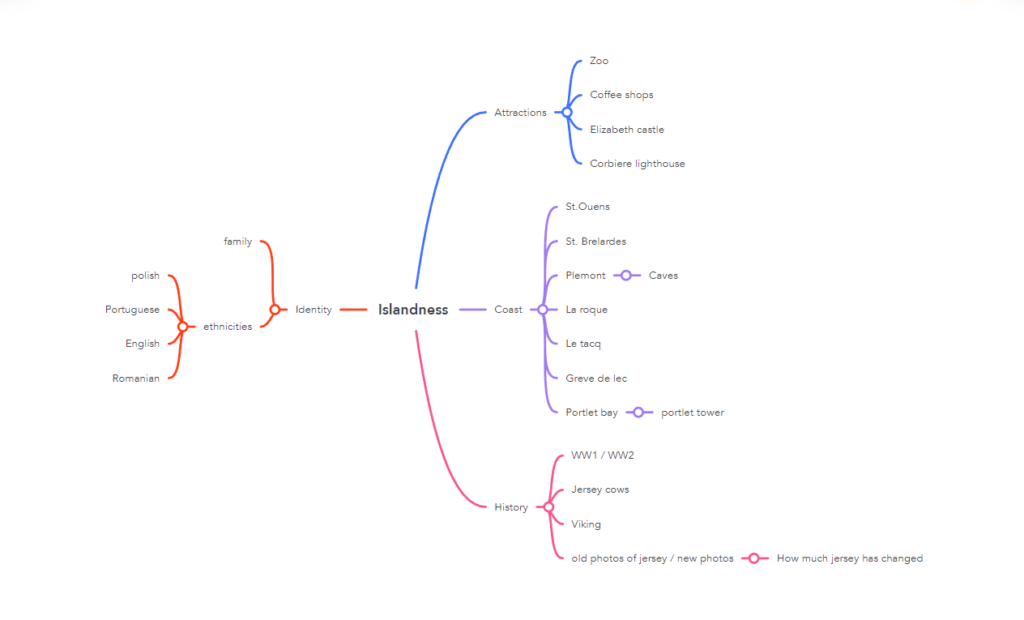
IDEAS









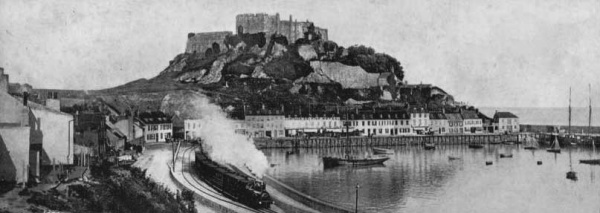

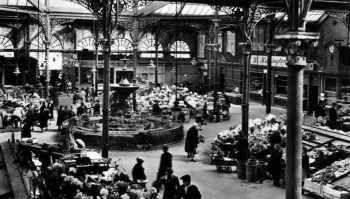






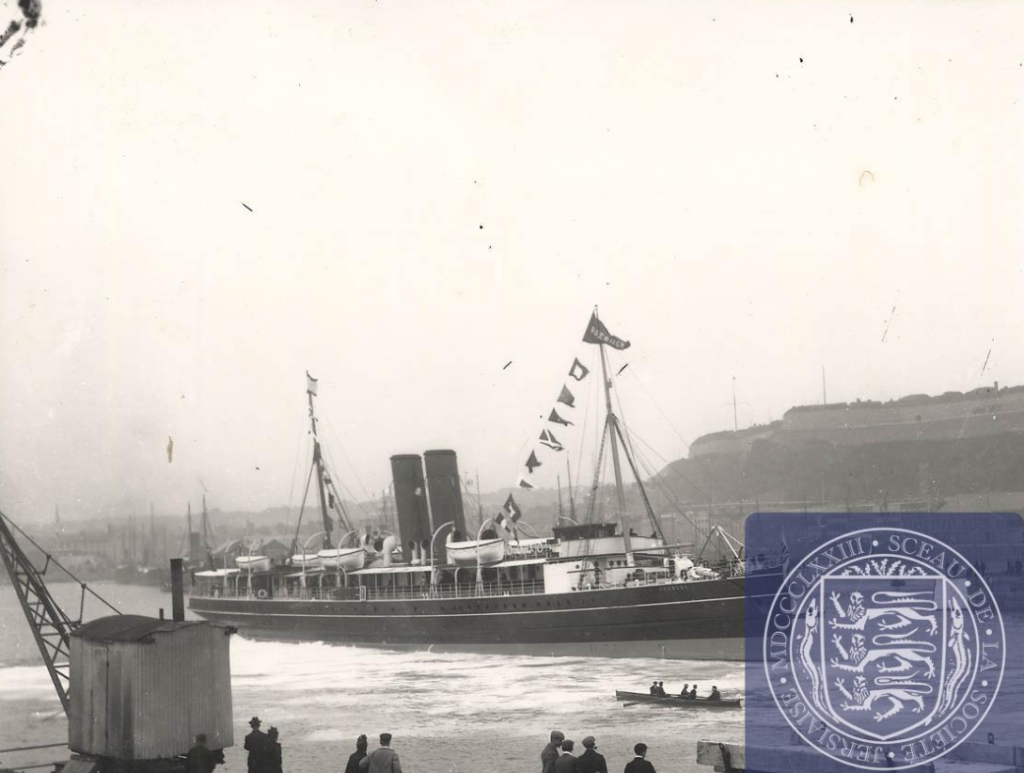
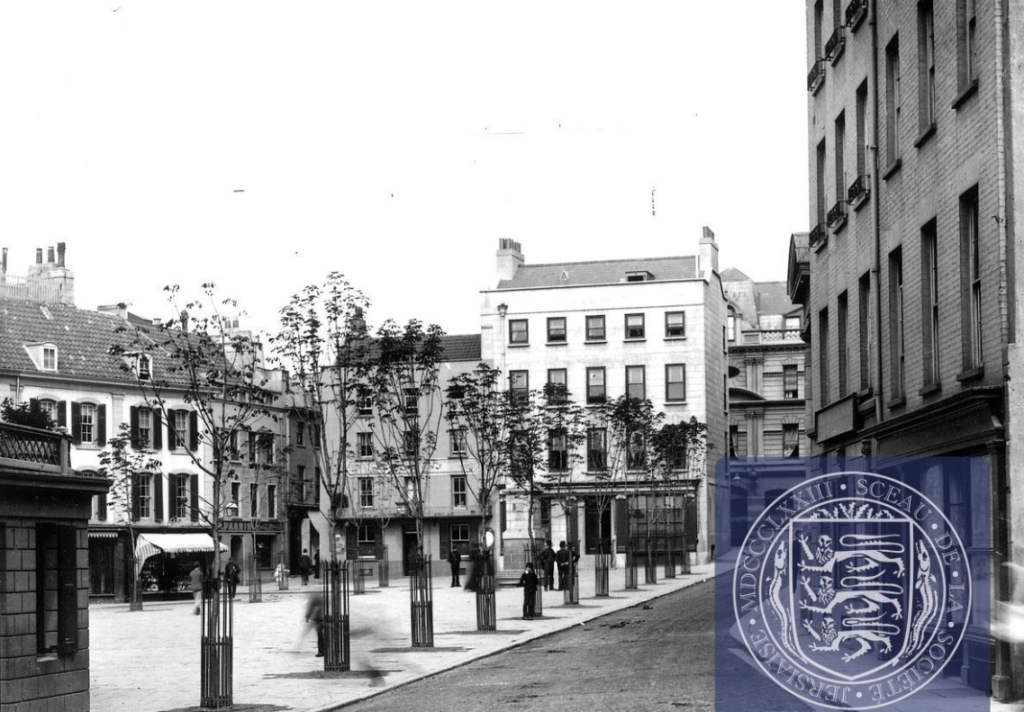
2. My other idea is taking photos of the wildlife at Durrell zoo. I will capture the natural landscapes and also the animals living there.
Book: The Butler by Sian Cumming
3 words: Rocks, le Hocq, nature
Sentence: My zine will include photos from the le hocq photoshoot.

Key colours:
RED: Photos I picked to be in my zine.
BLUE: These photos didn’t make it in the zine but I felt that they had potential so I used them in the photo gallery.
PURPLE: discarded / photos that didn’t have much potential to be included in my zine and photo gallery
